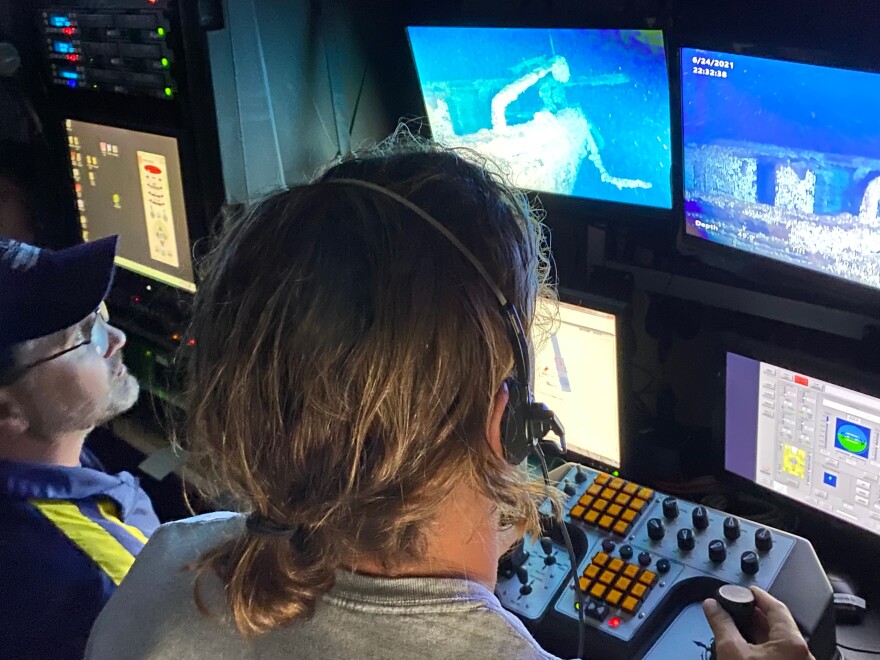In September of 1894, five sailors lost their lives when a schooner barge, the Ironton, had a catastrophic collision with the steamer Ohio in what was known as Lake Huron’s “Shipwreck Alley.” On Wednesday, Researchers from NOAA, the state of Michigan, and Ocean Exploration Trust announced they found the intact Ironton shipwreck within NOAA's Thunder Bay National Marine Sanctuary.

“Discoveries like this are fascinating because they connect people to Michigan’s long history of maritime innovation and commerce,” Sandra Clark, director of the Michigan History Center and co-manager of Thunder Bay National Marine Sanctuary, said in a statement. “The more we discover, the more we understand the lives of the men and women who worked the Great Lakes.”
In 2017, expedition crews discovered the bulk carrier Ohio in approximately 300 feet of water, but despite mapping a large area, the location of the Ironton remained a mystery. Several years after crews worked to uncover the location of the Ohio, they armed themselves with research into the weather and wind conditions from the night of the fatal collision between the two vessels, Clark said. Using multibeam sonar imaging and an underwater robot, multiple teams working together were able to uncover the Ironton’s final resting place.
The Ironton is currently resting upright, hundreds of feet below the surface of the cold waters of Lake Huron, which have helped preserve the ship in great detail. Its three masts are still standing, and an anchor, still attached to the ship, rests on the bow.

To learn more about the history of the shipwreck, check out this detailed description from NOAA.
The Thunder Bay National Marine Sanctuary covers 4,300 square-miles, and about 200 shipwrecks are preserved by Lake Huron’s cold waters in and around the sanctuary area. The Great Lakes Maritime Heritage Center in Alpena serves as a free education center for the public and is open year round. Visitors to the center can learn more about those 200 shipwrecks, as well as fish, paddle, snorkel, or dive the wrecks in the sanctuary.
While the site of the Ironton is not currently marked by a deep-water mooring buoy, the sanctuary intends to deploy one to mark the location and help divers visit the site safely.
“The discovery illustrates how we can use the past to create a better future,” said Jeff Gray, Thunder Bay National Marine Sanctuary superintendent. “Using this cutting-edge technology, we have not only located a pristine shipwreck lost for over a century, we are also learning more about one of our nation’s most important natural resources — the Great Lakes. This research will help protect Lake Huron and its rich history.”
The discovery for the Ironton wreck comes after multiple exploration missions in 2017, 2019, and 2021.








